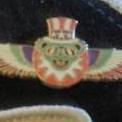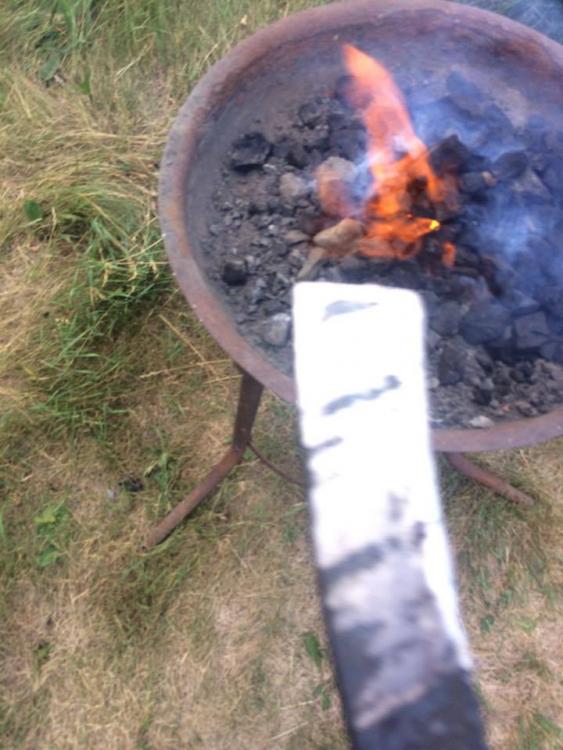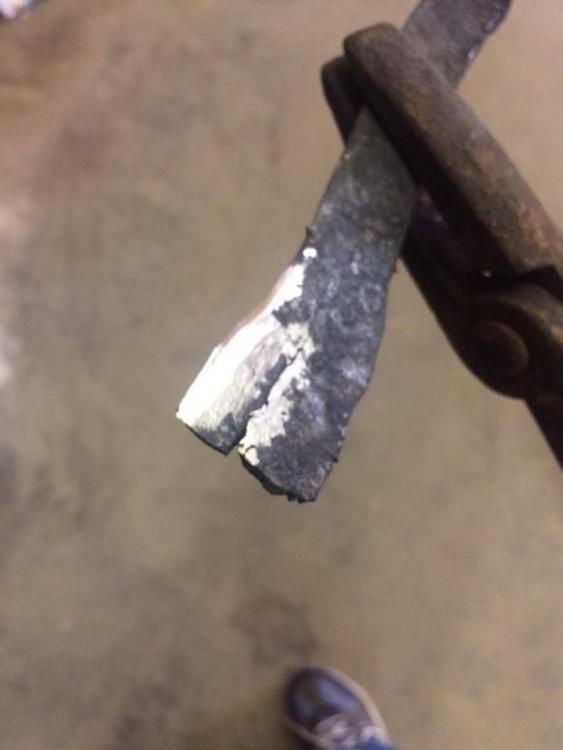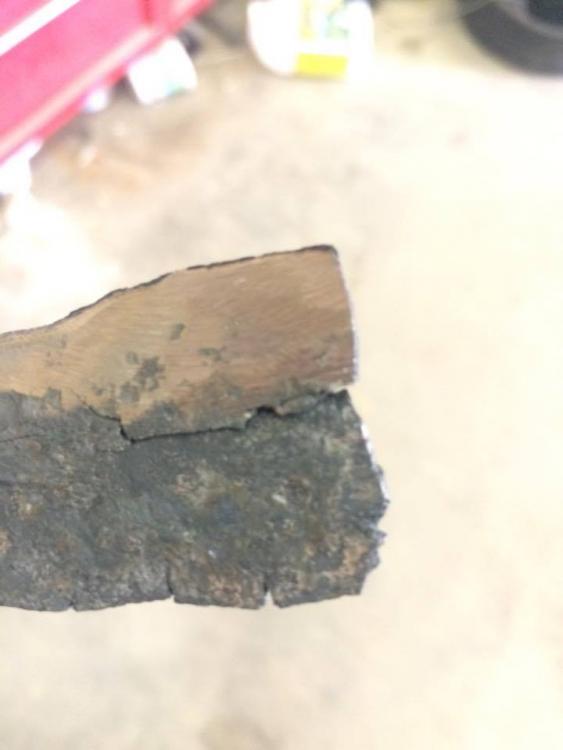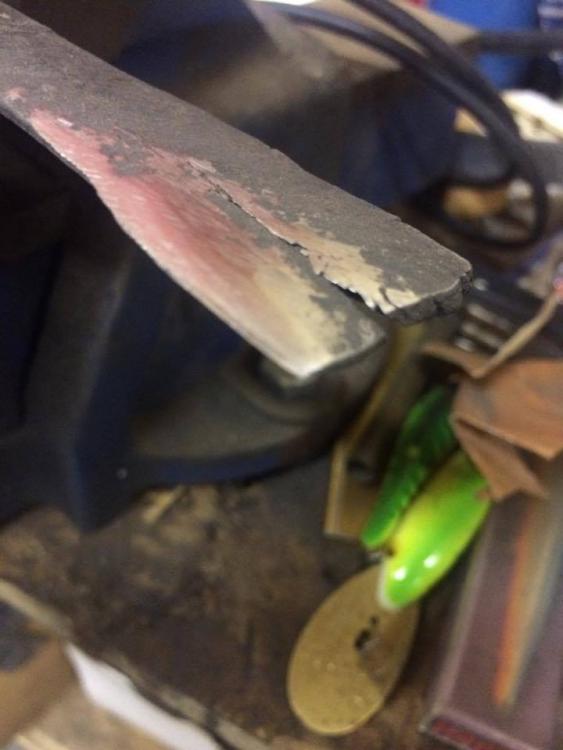-
Posts
34 -
Joined
-
Last visited
Profile Information
-
Gender
Male
-
Location
Fort Qu'Appelle, SK
-
Interests
Computer Programming/Gaming, Blacksmithing and Music (Guitar/Drums)
Recent Profile Visitors
2,094 profile views
-
I did not die people, I have been too busy with non-blacksmithing stuff for the last couple of years. I am aiming to get back into it either before winter hits in 2019 or after winter ends in 2020. We will see. It's going to be a busy winter again... but I really want to get learning again.
-
Sorry, but only one picture is all the auction company is posting. So here it is: When I saw the picture, I immediately thought WWI forge. But I don't know if there is anything else with it other than the coal rake or whatever that is in the picture... hard to make out for me. It will probably go for a lot of money, more than I thought, but wondering what you think would be a good bargain to aim for as a high-end, so I don't pay more than what it would actually be worth. I thought no more than $75, just because it's probably incomplete and collectors like that sort of thing if i was to resell it.
-
Hmm okay. I will take mental note for the next piece I try. Maybe next week, gotta get some Coal from the guy I got some last year. Two 5 gallon pails lasted me about 10-12 forgings of small stuff in a year. So I should be able to get by with another two pails for maybe half a year or more
-
Ya my forge is too shallow to be working with anything too big. I am running low on charcoal as it is, gotta get some more. But no, I have maybe 2" below it at the most. I had almost no air going into it just because I didn't want it to get too hot too fast. Probably still not enough, need more insulation between the fire and the metal I guess. I really have to consider making a new forge with those pyramidy shaped pits. :/ My forge is basically a 40 yr. old lawnmower turned upside down.
-
Well I got out and spent a 40 minutes on a small section, just to see what happens. It is fairly strong stuff, and I think it has an odd heat tolerance or I hit it too hard. It got no thinner than 1/4" and started to split down the middle. could just be a weak part from when it was cut off. I will have to try some of the bigger pieces to see if i have any luck. Pictures incoming. Notes: It doesn't cut hair, but cuts boxes fine. Could be a box cutter maybe as it is lol. I will definitely try a bunch of heat treat options if I can scrounge up the different types of oil and such. I got all my life to do this so I took the more solid side of the split side, ground it down a little more after forging it to the point where I thought if I hit it anymore I would just make it worse. it's about 1/8" at the thickest part now. I just did water from an orange / bright red color at that tip part. It's all I have for tools/sandpaper right now, so I am not expecting a master blade edge HAHAHA
-
Hello everyone, been a while! I said a while ago that my friend had some metal to give me from work, and boy did he deliver! I got around 20lbs of High-Manganese proprietary metal from a refinery. They are cutoffs from the big pipes that they use. Because it is proprietary metal, the only thing he could tell me about it is that it is High-Manganese because he has to use a respirator full face mask to cut it with the cutting tools hehe. So one of the ribbon like pieces he gave me is pretty small, like 1/8" thickness and I was going to try to smooth it out, thin out the edge and see what kind of an edge it can hold. If it is good enough I might consider welding it into the edge of a blade, and use normal steel as the backer in the future if it is good enough. So my question is, I read here and many sources that warm peanut oil is a good 'go-to' method of hardening it before tempering it again, and I am going to try that, but is there any special secret that anyone has ever used when dealing with something like this. I can put pictures of it if you wish. As a side-note about the metal, i have probably 6-8 pieces that are around 2cm x 2cm x 15cm long (they are tapered from the angle cut on the pipe already so that's a lot less work I will have to do on the edges). But he also gave me two chunks of it from where they cut the pipe to put valves in. They are around 33cm x 20cm x 2cm in size, and I have to figure out a way to cut it without a plasma cutter HAHAHA. So that should be good once I figure out exactly what I am working with. Any comments / suggestions on an order of operation with this stuff?
-
Just got back from Vacation. Lots to read over I was actually thinking about this as well. We are keeping an eye out for Shed Packages that go for cheap, used ones and such. Seeing if we can get a good bargain considering it'll be cut up a little for ventilation and such, so it doesn't have to be perfect I am going to look into this. I know someone in Alberta that sells converted containers. (They convert them to workshops) Ok now THAT is cool. I see the posts about treating the wood. I will def. consider this.
-
So backstory; My parents music store (lessons/repairs) closed June 30th, and we have had to move the Picture Frame shop into the garage which is where I stored my forge/anvil/tools. So I had the idea of making some sort of outdoor shop area. This is where the issues arise. I am not allowed to have any more cement pads on the property (we have the house, a 4 car garage and the other lot has a pad for the 2 car garage which houses the frame shop), so I will need to make a non-slab based structure. Basically, we can put up a 8x10 shed or thereabouts. My shed concerns would be the floor of a shed is wood, so I would have to put something else on the floor to prevent burning the place down. Maybe sand/gravel mix? I was also just thinking about making a semi-sheltered area where I could have the forge and a hood/windbreak for that, and the Anvil. Anyone have any suggestions?
-
I have been out of the loop for a long time now, and I just heard about WV's flooding. First thing I thought about when I heard is to pop in here. Good to hear you are safe Glenn.
-

Book I just picked up about knives daggers and bayonets
Kardall replied to Kardall's topic in Historical Blades
I will give that one a shot as well For the items it lists the lengths of the full piece, and when you go to the Bayonet area, it's funny. The French have some of the largest bayonets, like they were compensating for something hurhurhur But there is a 19th Century Combination Knives section with 4 entries. Belgian Knife Pistol, c 1870 This is similar to it: Now, I've seen a lot of pictures and movie's with knife pistols, and most of the time it's a pistol grip with a blade ont he side of the barrel or something like that, but I have never seen anything like that before. That's pretty cray cray. -
http://www.amazon.ca/Illustrated-Encyclopedia-Knives-Daggers-Bayonets/dp/075481890X That is the book I got, so if anyone has any questions about what is in it, go ahead and ask them if I don't answering thus. 246 Chapters segmented into topics such as: 17th-century main-gauche daggers Georgian Dirks Survival weapons of World War II and after Indo-Persian Khanjars Japanese daggers I will give an example of one of the coolest things I have seen so far in the book that really intrigued me, and made me want to buy it. Spanish stiletto dividers, c.1700-50 *Not the picture in the book but, this is what it is: The Picture listed is a knife only (white background) so you can see the profile really well, and it's really really clear and detailed. it looks exactly like the one there, so it may be just pictures from a historical museum or something similar of that nature, for every sword in the book so far that I have seen. It contains a write-up of the item, such as it's intended use in that era and the graphic has points indicating design details such as etched and gilt decorations, splitting blade and pivoting joint. I think it is a great resource if you want to go through and find a style of blade, and get some inspirations or try to re-create one of that era
-
I found this video while browsing the web, and I didn't see it in the forums here recently, so I figured I would put it up. This gentleman makes knives and treats them with 3-in-1 oil and blues them before sending them out to customers. A bunch of people were discussing best methods and he thought he would do a big sample of what the different methods can do to prevent rusting in a finished blade. Very very interesting watch!
-

Acquired large Forge Bellows..... Clueless!
Kardall replied to Adamjoseph's topic in Bellows, Blowers
Honestly, something like that is priceless. Real Bellows are incredibly hard to come across nowadays, especially ones of that magnitude. 7 foot would be really useful in say a heritage site, blacksmith village tourist area of sorts. But if you really wanted to put some kind of price on it. One of that size is probably around USD$3,000 - USD$4,000. I have seen 4 foot ones go for around USD$1,800 When they start getting that big, the difficulty is finding someone to buy them, while the smaller ones are more easily transportable so more inclined to be purchased. I would say if you did want to sell it, put it out in here. At least someone here would actually use it for its desired purpose They look in really good shape though. -
Awesome job
-
I read the original post, and I see these limit switches you put in. Question. Do you think it'd be possible to make a thickness guide for it? Lets say, you want to crush something really fast but to as close to final dimensions as possible. Could you do some sort of a moving limit switch activator that has a measurement on it? So you would "move it down to read 1 1/2" and it will stop just above 1 1/2" so you don't go too far, and mess something up? Just a thought that I had running around my head as I read this I can't afford anything right now. My second hobby just crept in, and I had to upgrade my PC so I can actually play the latest games LOLOL


